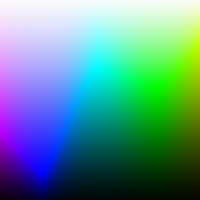Keep your cool when cleaning a glossy-screen Mac


Glossy screens appear to be on the upswing now in Macville, now that the iMac has gone glossy. The MacBook comes with the glossy screen, but for the moment, the matte display remains the default option for the MacBook Pro. But maybe not for long. Check out what the Apple Store says about the differences:
Choose the glossy widescreen display to make your graphics, photos, and videos appear with richer color and deeper blacks — great for watching DVD movies. If you prefer a display with anti-glare coating for a matte rather than glossy viewing experience, choose the standard widescreen display.
In other words, it seems that only losers will pick the matte display. Hey, some of us disagree that this current generation of brighter and glossier displays are better for any application. But it's hard to object with consumer choice — as long as there is a choice to be had.
Related Story: Does the glossy screen of the new iMac suck?
Still, a note about cleaning these glossy displays caught my eye the other day. It was on the Klear Screen site, a company that sells kits of optical cleaning spray and optical-grade chamois cloths. The note warned users that the glossy screens require "a little more patience and a little more effort to clean effectively."
Here were the steps it suggested: 1. Let the screen cool before cleaning. LCDs are digital devices and can generate some heat. Some have cold-cathode fluorescent lamp (CCFL) or an array of LED lights for backlighting, which also can warm up the panel. This heat could interfere with the cleaning, causing some areas to set before wiping with the polishing cloth.
You cannot effectively clean a glossy TFT screen when it's hot or has been in use for an extended period of time.
2. Select the proper cleaning cloth. Use an optical-grade microchamois or microfiber cloth to clean and polish the display. Klear Screen suggested that these advanced cleaning materials would polish better than ordinary dust-free cloths or scanner wipes. (Certainly, never use paper products to clean the screen — they may feel soft to the touch but they are rough going for the actually soft surface of the LCD screen.)
3. Clean in small sections. The instructions suggested that dividing the display into small areas and then polishing until the entire screen is streak-free will work better than broad swipes with the cloth.
Of course, the glossy screens show fingerprints and other dirt more than the matte screens. So, it's important to maintain your investment by using the proper cleaning materials and procedure.
I was also interested in another note in the iKlear instructions. It said that customers shouldn't spray the solution directly onto the base of the old "lamp shade" iMacs since this could cause the fluid to go inside the computer.
However, this sounds like good advice for any computer. Rather than spray directly, which could let the liquid pool and run down under the keyboard of a laptop, for example, spray the solution on a cloth and then wipe that cloth on the machine. Better safe than sorry.
BTW: I prefer using the microchamois in sheets rather than as beanie-baby-style toys as seen in these Softbelly-branded cleaners. They are advertised as "Decorative & Functional Toys for Your Monitor." Yikes.
I've used the Klear Screen and iKlear products for many years with my computer monitors, laptop screens, CDs and eyeglasses. The spray is non-toxic, anti-static and doesn't contain alcohol or ammonia or other solvents that are bad for optics. In addition to large and small bottles, the company offers a handy travel kit of "singles," which include a small cloth that's impregnated with the iKlear solution and a micro-chamois for polishing the screen.